South Tamil Nadu : RRII 430, RRII 105 and RRII 429
Kerala : RRII 422, RRII 430, RRII 429 and RRII 417
Other clones : Tjir 1, PB 86, BD 5, BD 10, PR 17, GT 1, RRIM 600, PB 28/59, PB 217, PB 235, RRIM 703, RRII 5, PCK-1, 2 and PB 260
Soil –
Climate –
June – July
Propagated by green budding and brown budding
Bed size: 60-120 cm width and of convenient length.
Pit size of 1 m3 are dug and filled up with top soil and compost.
Planting material Spacing (m) Population / ha
Budded plants
Hilly areas 6.7 X 3.4 445
Plains 4.9 X 4.9 420
Seedlings
Hilly areas 6.1 X 3.0 539
Plains 4.6 X 4.6 479
In situ sowing
Germinated seeds are sown in situ in the pits. Healthy ones are retained and the others removed.
Apply 10:10:4:1.5 NPK and Mg as per schedule given below:
Months after planting Period of application NPK and Mg mixture(10:10:4:1.5)
g/plant kg/ha
3 September/ October 225 100
9 April / May 445 200
15 September/ October 450 200
21 April / May 450 250
27 September/ October 550 250
33 April / May 550 200
39 September/ October 450 200
Apply 400 kg of mixture per ha in 2 doses, once in April/May and another in September/October from the 5th year till the tree is ready for tapping.
Banana, pineapple, tuber crops (Amorphophallus, dioscorea, colocasia and arrowroot), ginger, turmeric, vegetables (cowpea, cucumber, bhendi, amaranthus), cocoa, medicinal plants(Strobilanthus haenianus (Karimkurinji), Adhatoda vasica (Valiya Adalodakam) and Plumbago rosea (Chuvanna Koduveli) can be grown in the initial 4 to 5 years.
Syndrome characterized by prolonged dripping of latex with the gradual decline in volume yield, Pre-coagulation of latex and partial or complete drying of tapping area (10-25 per cent).
Control : Reduce tapping intensity or give a tapping rest for 3 to 12 months.
Pests
1) Scale insect
Management-
2) Mealy bug
Management-
4) Cockchafer grub
Management-
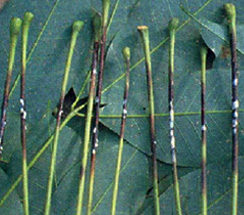
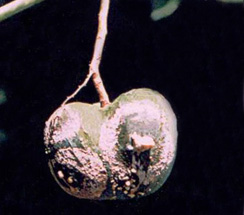
Symptoms:
Management:
2.Birds eye spot: Drechslera heveae (Helminthosporium heveae)
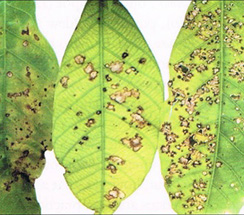
Symptoms:
Management:
3.Corynespora leaf spot: Corynespora cossicola
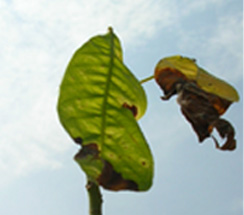
Symptoms:
Management:
4.Pink disease: Corticium salminicolor
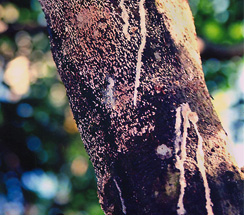
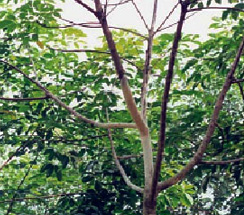
Symptoms:
Management:
5.Powdery mildew: Oidium heveae
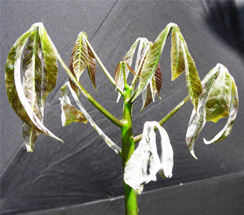
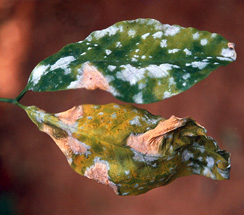
Symptoms:
Management:
6.Brown root diseases: Fomes noxius

Symptoms:
Management:
| 7.Colletotrichum Leaf Disease : Colletotrichum acutatum, C .gloeosporioides | |
Symptoms:
Management:
| |
Rubber yield steeply increases year by year, reaching a peak after 14 years of planting.
Annual yield
o 375 kg/ha from seedling tree
o 800 – 1000 kg/ha from budded plants.
